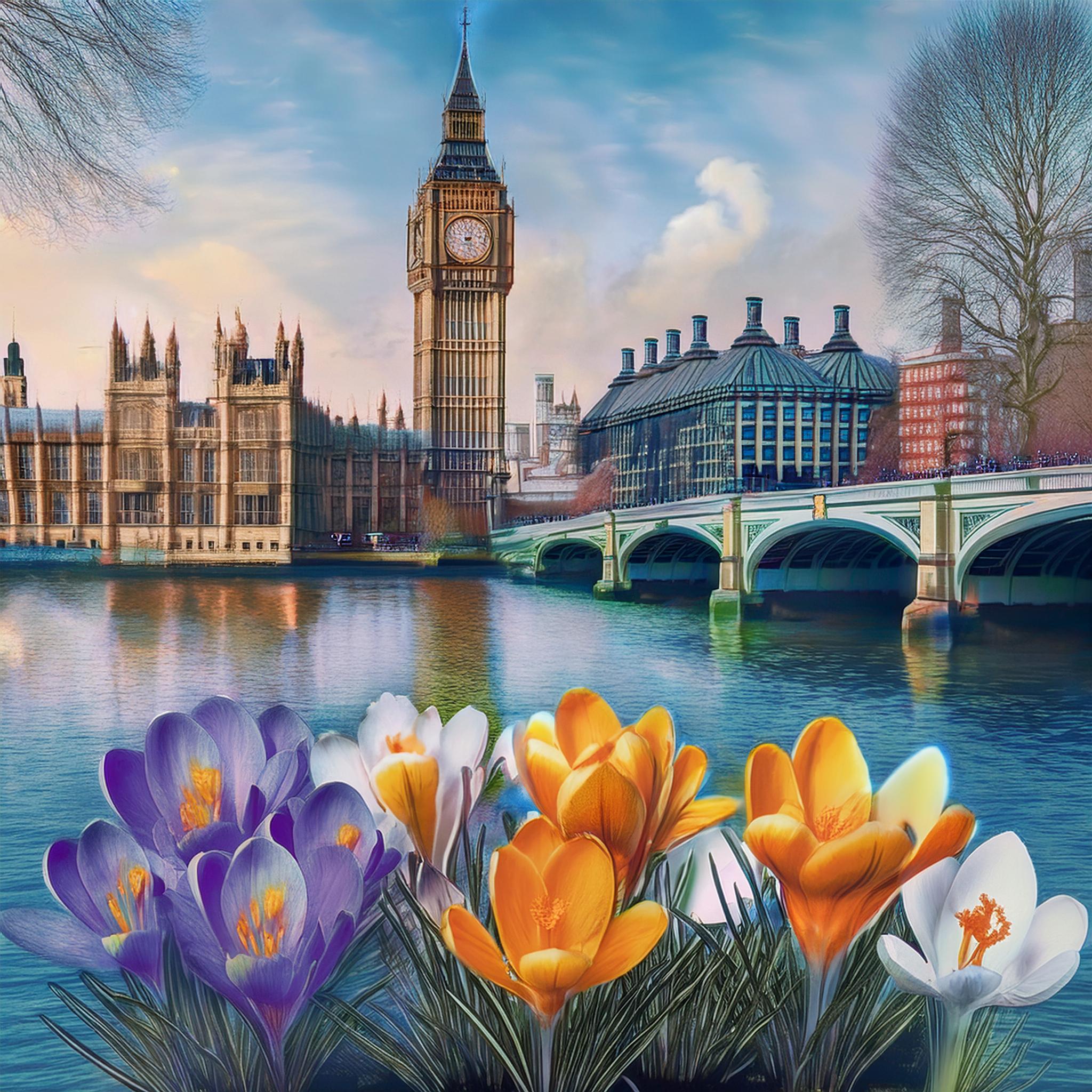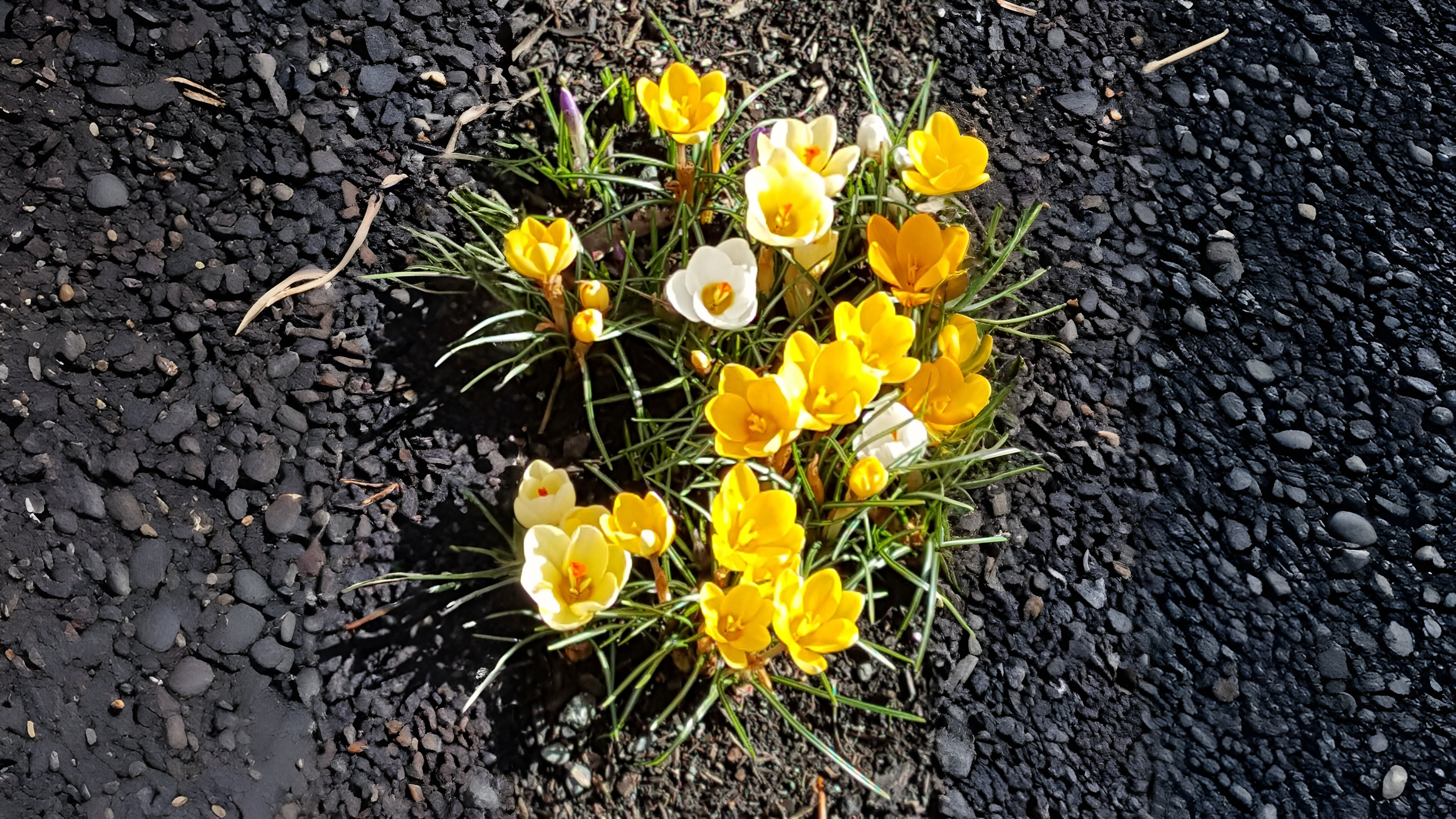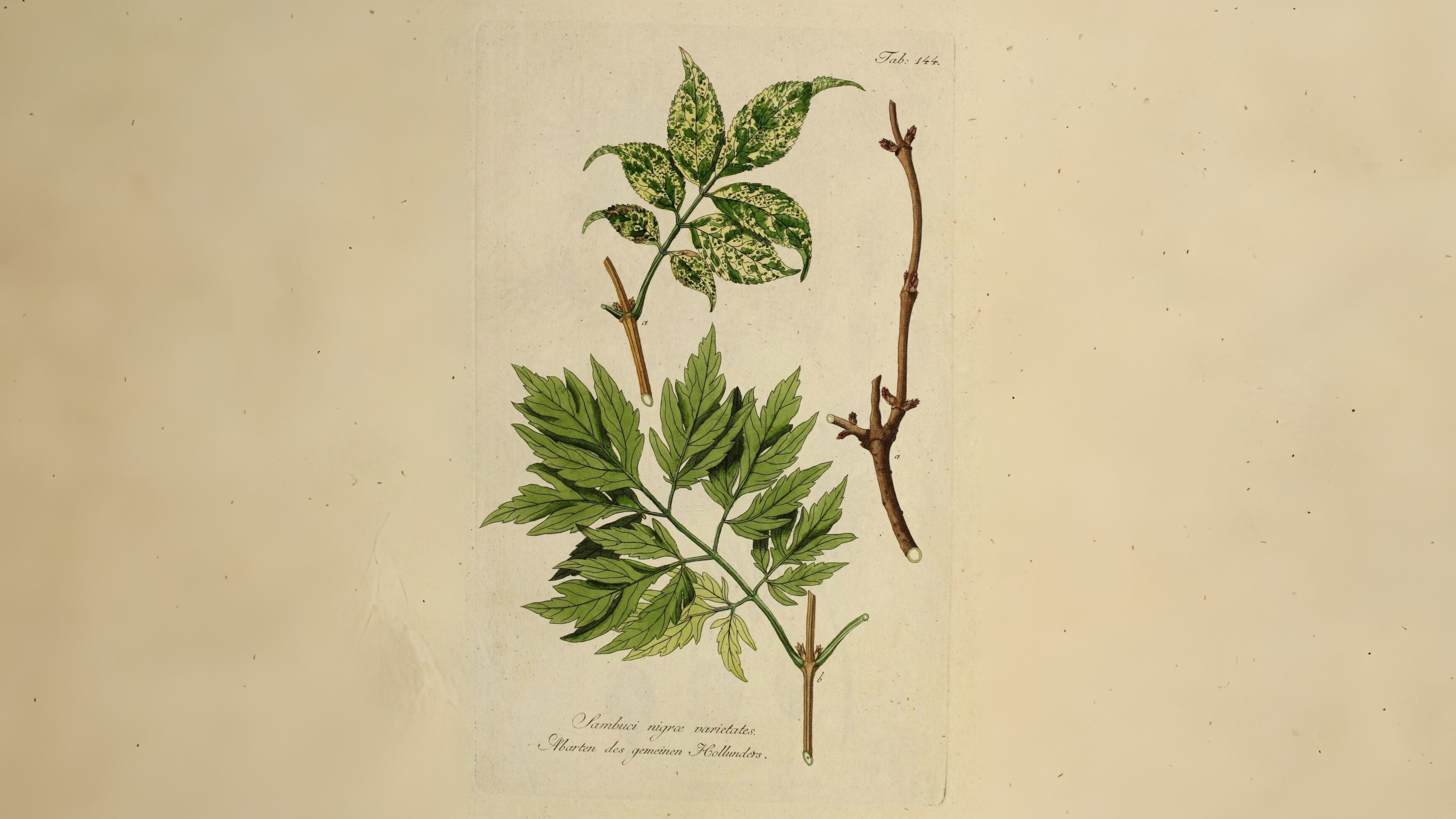Celebrate the arrival of spring with the vibrant blooms of crocuses! Discover the rich history and stunning variety of these beautiful flowers that brighten London's parks and gardens. From the delicate petals of snowdrops to the colourful displays of crocuses, learn about the fascinating journey of these early spring blooms and their significance in our gardens.
Join us on February 6th for an in-depth exploration of crocuses and the fresh green growth that signals the end of winter. Don't miss this opportunity to welcome the first signs of spring!
Yellow, orange, white and purple crocuses will all now start to appear all over London. When a sunny day allows their petals to open fully, for many Londoners this will be the first day of spring. They are always best viewed in sunlight as many are quick to close their petals when the temperature drops. There are over seventy species in the wild and literally hundreds of different garden cultivars. Their flowers are the shape of champagne flutes and very variable. Some are striped, others feathered, freckled, veined, bearded or have what are called ‘birdwing’ markings. Their throats are often even more brightly coloured and when open in the sunlight reveal a long style and stigma which can be saffron or scarlet in colour. London’s parks and gardens abound with a huge range, and the national collection, with over one hundred different varieties, can be seen at Wisley. Good shows can also be seen as centrally as Hyde Park corner and there is a crocus lawn in Regent’s Park.
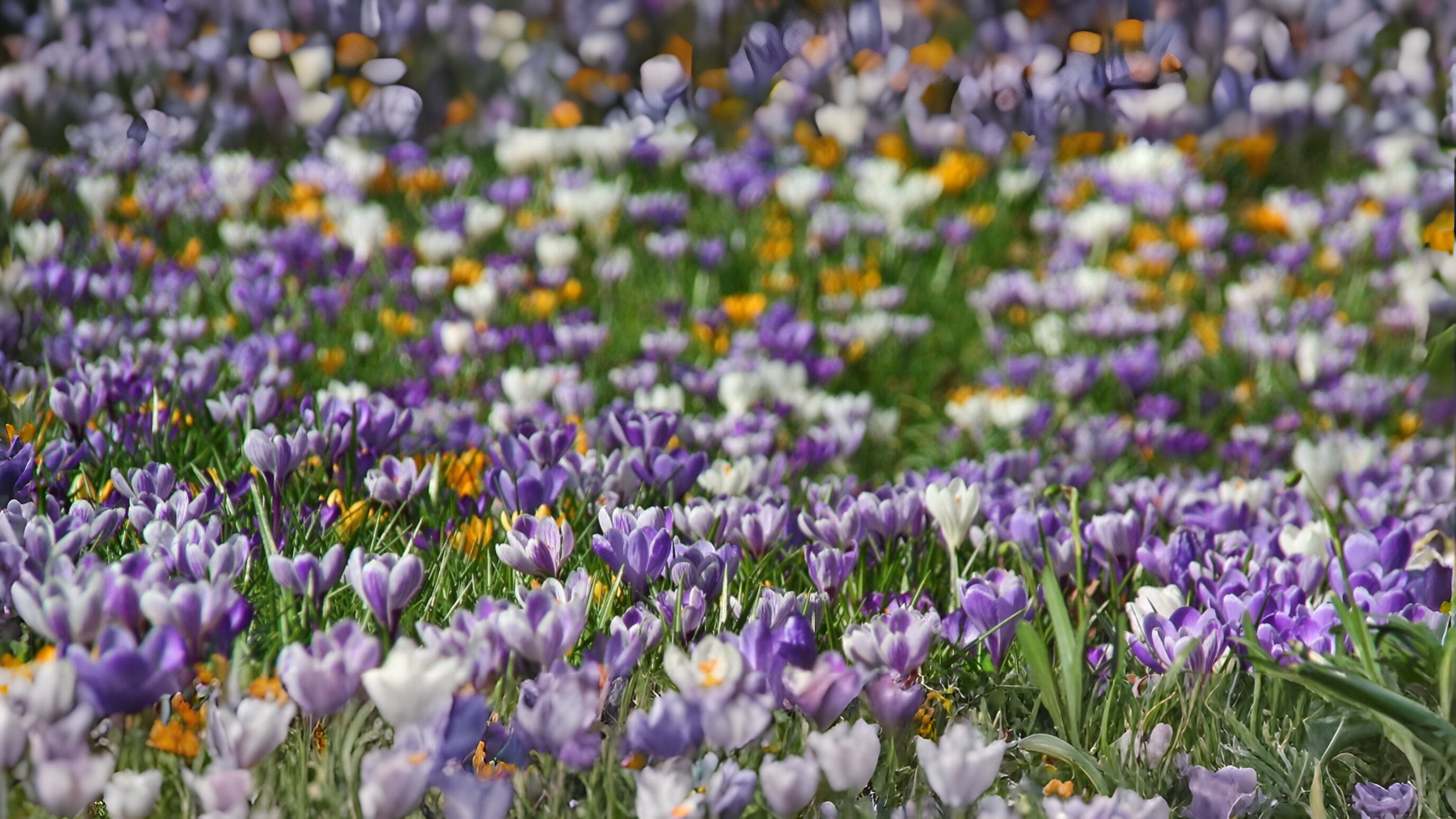

Crocuses have been part of the garden landscape in London since medieval times. Many are thought to have been introduced by the crusaders as dozens of white, bronze, yellow and purple crocuses are found wild all around the coast of the southern Mediterranean. Gerard, in his sixteenth century garden in Holborn, was known to grow four different species, one of which is said to have been obtained from the King of France’s gardener. Not many years later Parkinson, King’s botanist to Charles the First, already had thirty-one in his garden in Long Acre. In mythology, they first appeared in the footprints of the goddess of spring, Persephone. They also appeared when Zeus laid down with Hera. Where they occur now mice and squirrels love to dig up the corms. Sparrows inexplicably choose to peck only the yellow-petalled varieties, a practice Vita Sackville West suggested could be thwarted by throwing down an old fur coat. Some smell sweetly, especially the white ones at night and the purple ones during the day.
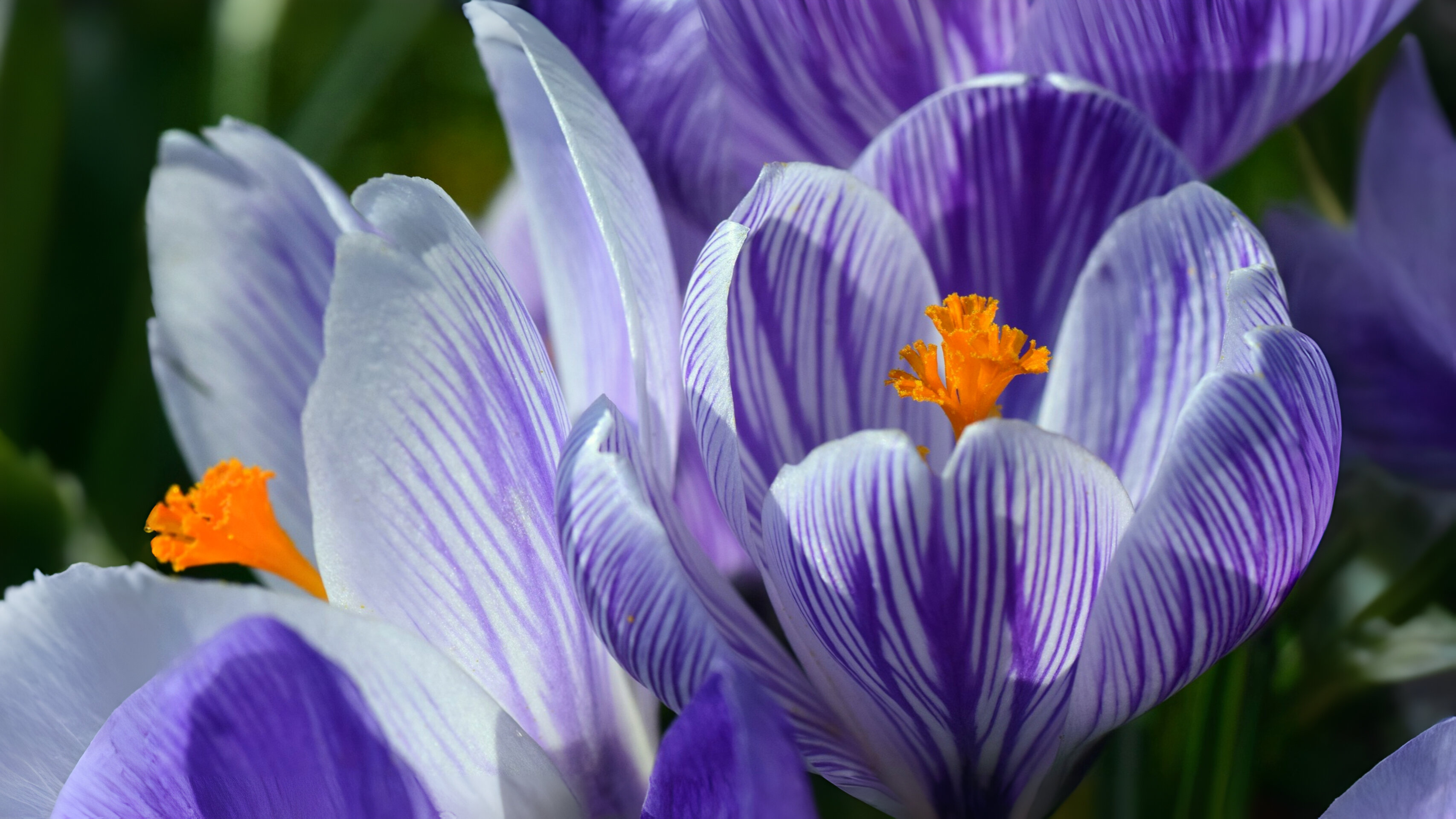
In 1806 wild crocuses were found in quantity in Battersea meadows, by the river wall. By the end of the nineteenth century they were still to be found in Totteridge meadows, but had become rare. Today we just have a few garden escapes e.g. Crocus purpureus can still be found at Warley, C. aureus on Keston Common and drifts of C. tomassianus in Cannizaro Park. One of the more spectacular sites for crocuses in London is the unlikely setting of Church Lane in Tottenham. On a strip of land beside the church there is an impressive hybrid swarm which includes white, mauve, purple, cream and yellow crocuses all happily interbreeding.
Anglo Saxons called February the month of sprouting kale and more and more plants are now starting to push up their new bright green leaves. In woods, the vertical leaves of bluebells are growing quickly and the shiny leaves of wild arum may already be fully open. Along paths, the leaves of cow parsley Anthriscus sylvestris and ground elder Aegopodium podagraria are also starting to appear. On bare ground, ground ivy Glechoma hederacea, dandelion Taraxacum officinale, and goosegrass Galium aparine are all becoming more apparent and elder Sambucus nigra, honeysuckle Lonicera periclymenum, wild clematis Clematis vitalba and some wild roses are already starting to burst bud.
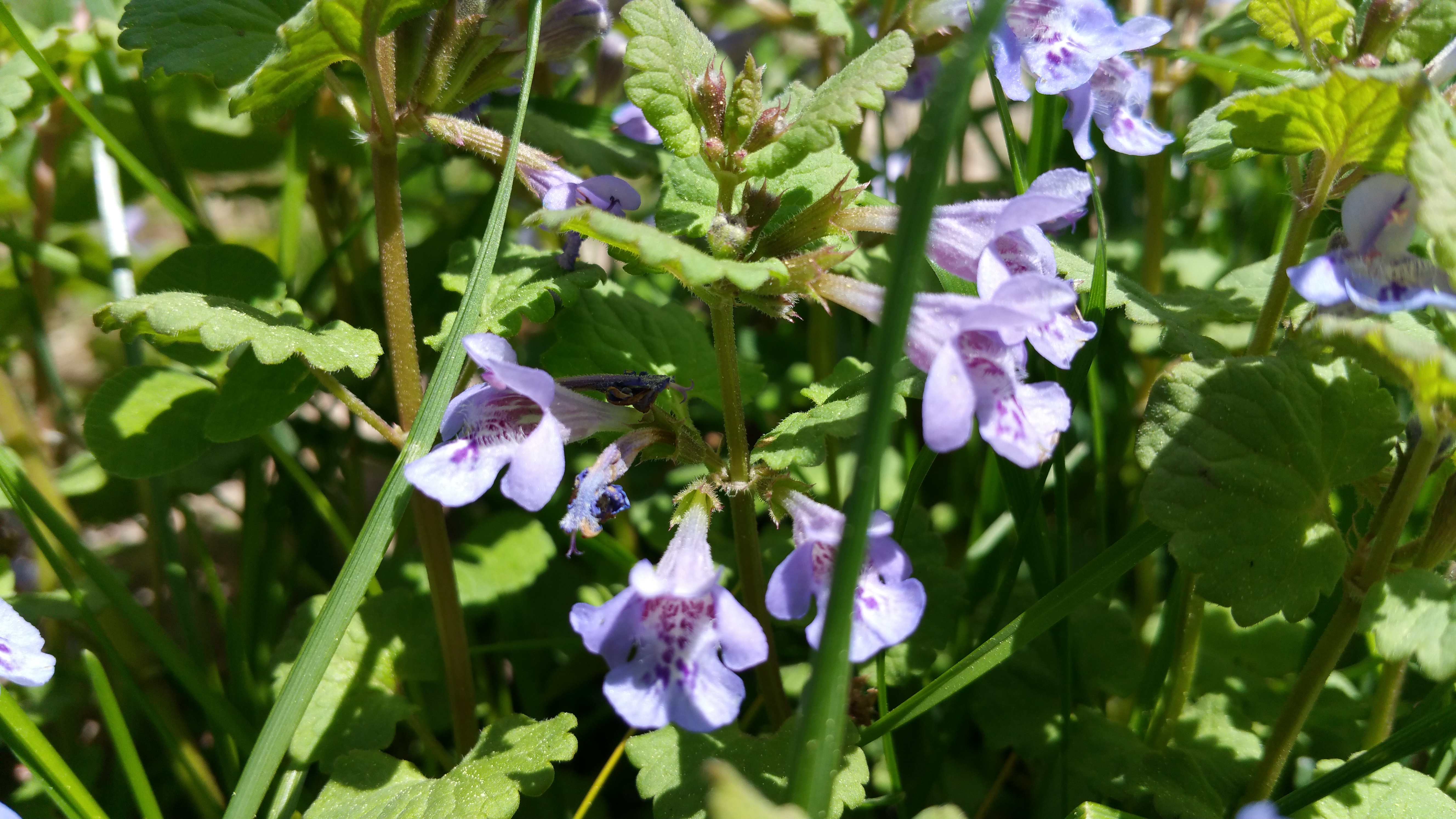
These first leaves of spring are often quite different from the colour they will become later e.g. elder leaves start off purple, turn green then can end up cream or even magenta by the time they reach autumn. Among this fresh growth it is always worth looking out for new orchid rosettes. In old, untouched chalky grassland these are now easily found and their position can be noted for later, when the flowers may well be hidden among tall grasses.
